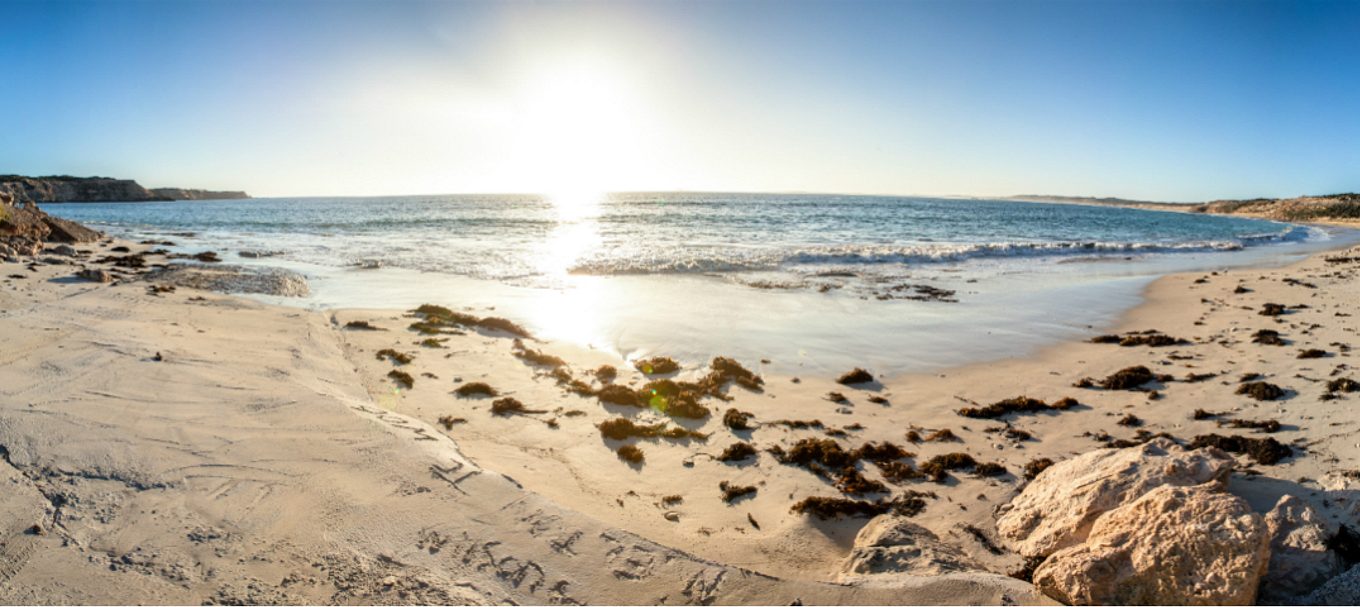
10 true crabs to spot in South Australia
Crabs belong to the large group of animals called Decapoda, which means ten-footed. Decapoda is an all-encompassing term for about 8,000 species of crustaceans.
‘True’ crabs have ten legs – eight walking legs and two grasping claws and walk sideways, whereas several other crab-like groups like hermit crabs, squat lobsters, and porcelain crabs differ in legs or movement.
Here’s 10 species of true crabs you’re most likely to spot in South Australia.
1. Black-fingered crab
This crab is the largest shore crab species in Australia. They can be found across southern Australia and northern New Zealand.
Research has shown that black-fingered crabs are strongly associated with their ‘home’ rock and do not move far from it during their lifetime.
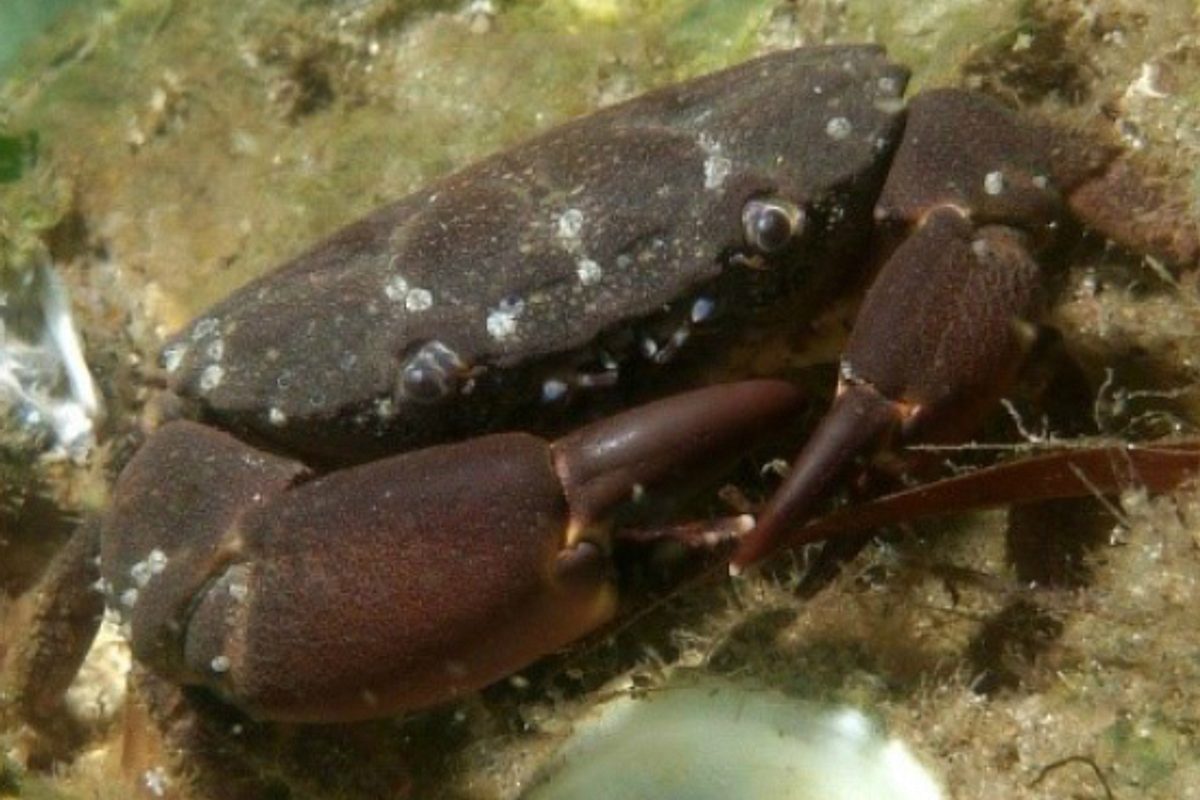
2. Purple mottled shore crab
This is a common species found along SA’s rocky shores.
The hard shell covering a crab body is known as a carapace. The carapace is shed regularly, known as moulting, for the crab to grow.
The purple mottled shore crab’s carapace is squarish with rounded edges.
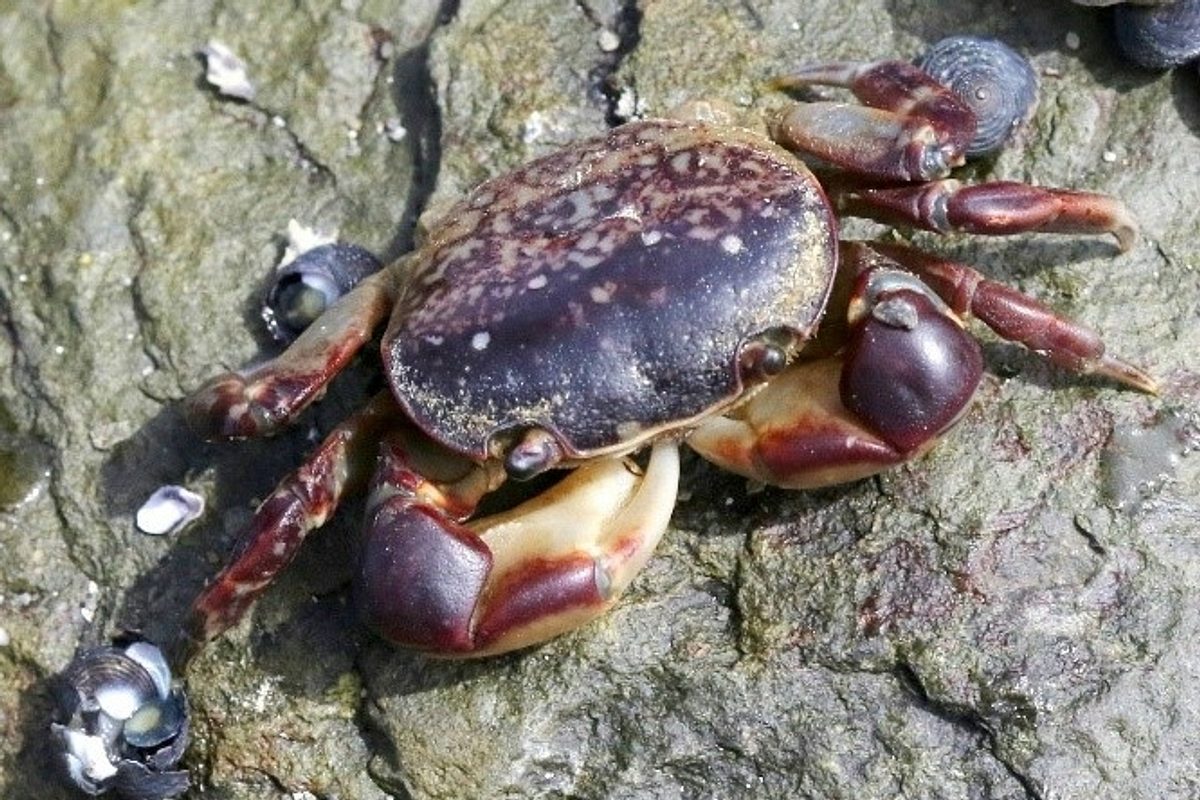
3. Rough rock crab
This crab not only sounds rock’n’roll, but looks rock’n’roll.
At about 8 cm wide, they are coloured purple or red-brown at the front, and grey or tan at the back. They have a straight, red rim along the front edge of their shell and between their eyes.
This crab has strong front and black claws, with tooth-like edges. During breeding time, a male rough rock crab will carry the female around for a few days until she moults her hard shell.
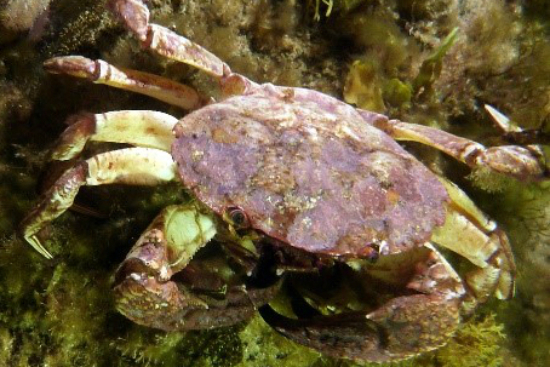
4. Sand crab
The southern Australian sand crab can easily be identified by the two dark red or purple-coloured spots near its tail at the end of its shell. They can grow to more than 15 cm wide.
Sand crabs can be found along the beaches of the Gulf St Vincent and the Spencer Gulf in SA.
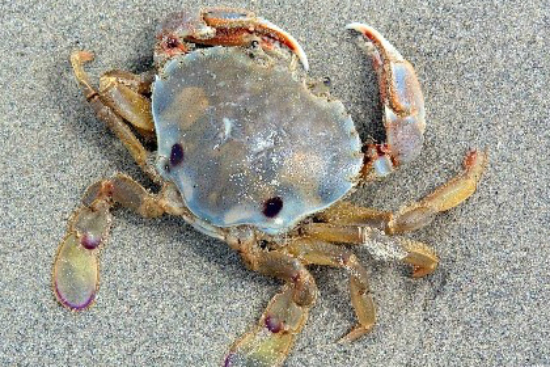
5. Smooth shore crab
This is another common species in SA waters and is closely related to the purple mottled shore crab.
The smooth shore crab has distinctive tufts of long hair between the bases of its legs.
There are some hybrid crabs that look like both the purple mottled shore crab and smooth shore crab.
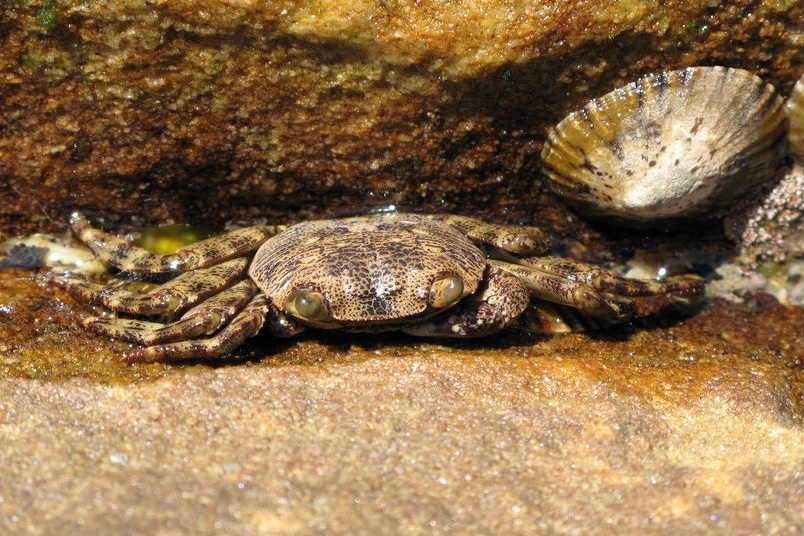
6. Little shore crab
This small crab, at about 2 cm wide, is usually well camouflaged on rocky and muddy shores.
It comes in many colours from green to cream, but a distinguishing feature is the three teeth behind its eyes and its 10 hairy legs.

7. Bearded crab
This cutie can be spotted across the south-eastern coast of Australia from the shoreline to about 70 m deep.
Bearded crabs are a greyish-tan colour, with long hairs around the edges of its hard shell and on its legs.
They grow to about 3 cm wide and have a habit of burrowing in the sand.

8. Smooth pebble crab
The smooth pebble crab has a marble-shaped, greenish-grey hard shell, with four white dots.
This crab is often found in calmer water, such as in the sand and mud near the mouth of estuaries, and on sheltered shores near seagrass beds.
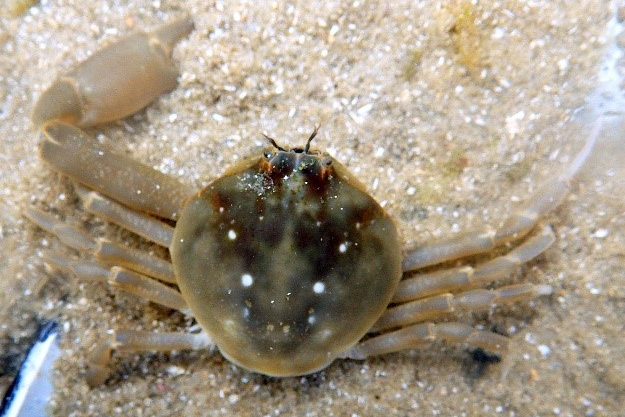
9. Decorator crab
This crab grows to about 5 cm wide, with long legs and blue-and-orange claws.
The crab loves to camouflage by attaching seaweed and seagrass to its shell and legs.
Decorator crabs belong to the spider crab family.

10. European green shore crab
Last and probably least, a crab that you’re likely to see but we wish you didn’t is the European green shore crab – a pest crab. The European shore crab is an introduced species, and is classified as a pest in South Australia.
European shore crabs carry parasites that can hurt SA’s native marine species.
This crab is found in bays, estuaries, and tidal creeks across various parts of the state.
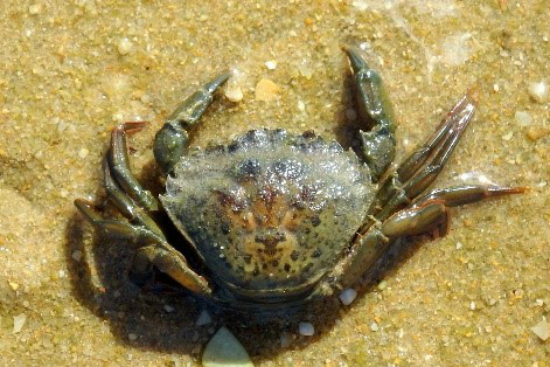
This story and images were prepared with the help of Marine Ecologist and Educator Janine L. Baker.
Love SA’s marine life? Check out this wrap-up of some of the unique species that call our state home.
Main image: Purple mottled shore crab (image courtesy of Museums Victoria)
This story was originally posted in June 2019.





